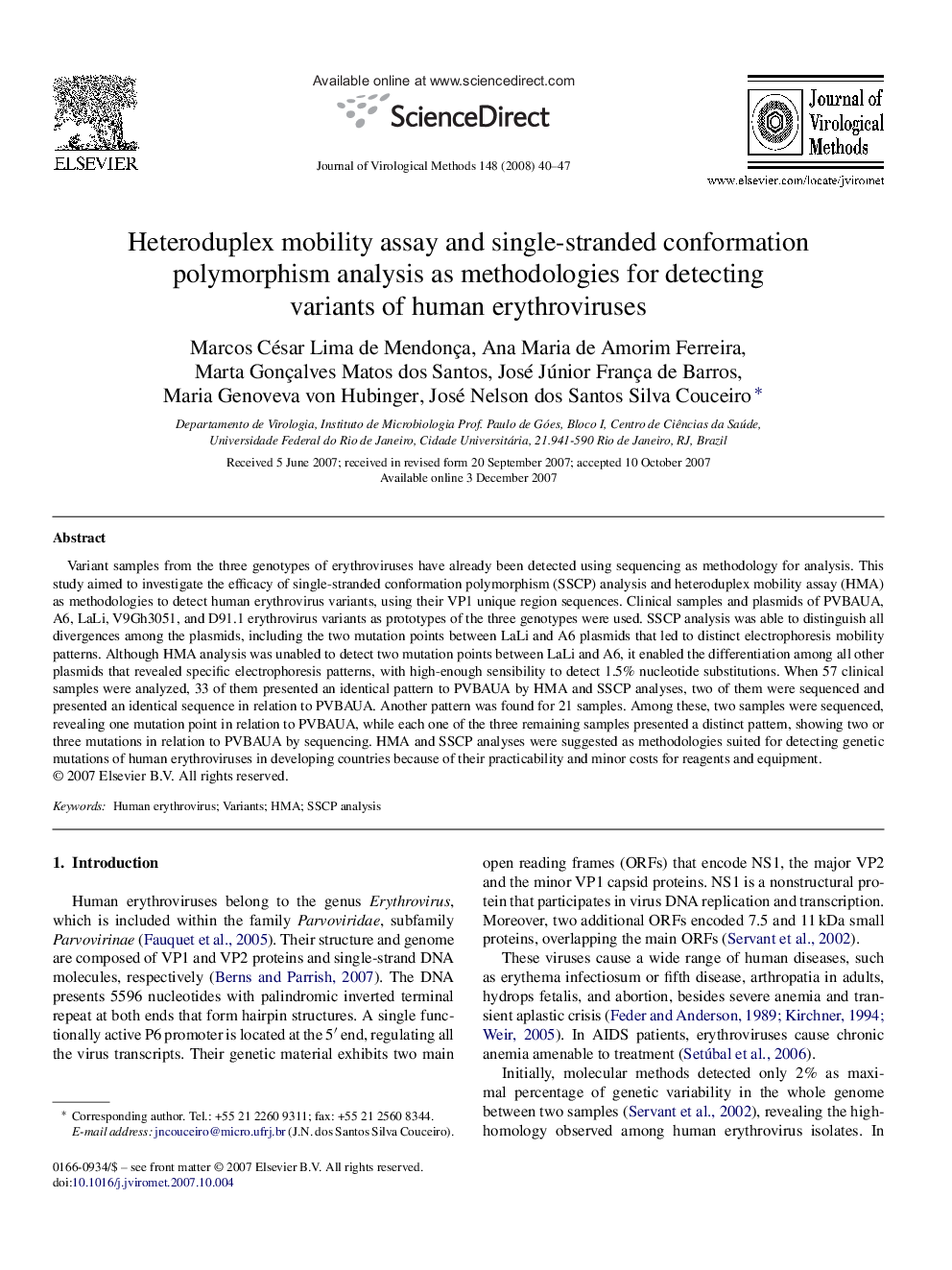| Article ID | Journal | Published Year | Pages | File Type |
|---|---|---|---|---|
| 3407913 | Journal of Virological Methods | 2008 | 8 Pages |
Variant samples from the three genotypes of erythroviruses have already been detected using sequencing as methodology for analysis. This study aimed to investigate the efficacy of single-stranded conformation polymorphism (SSCP) analysis and heteroduplex mobility assay (HMA) as methodologies to detect human erythrovirus variants, using their VP1 unique region sequences. Clinical samples and plasmids of PVBAUA, A6, LaLi, V9Gh3051, and D91.1 erythrovirus variants as prototypes of the three genotypes were used. SSCP analysis was able to distinguish all divergences among the plasmids, including the two mutation points between LaLi and A6 plasmids that led to distinct electrophoresis mobility patterns. Although HMA analysis was unabled to detect two mutation points between LaLi and A6, it enabled the differentiation among all other plasmids that revealed specific electrophoresis patterns, with high-enough sensibility to detect 1.5% nucleotide substitutions. When 57 clinical samples were analyzed, 33 of them presented an identical pattern to PVBAUA by HMA and SSCP analyses, two of them were sequenced and presented an identical sequence in relation to PVBAUA. Another pattern was found for 21 samples. Among these, two samples were sequenced, revealing one mutation point in relation to PVBAUA, while each one of the three remaining samples presented a distinct pattern, showing two or three mutations in relation to PVBAUA by sequencing. HMA and SSCP analyses were suggested as methodologies suited for detecting genetic mutations of human erythroviruses in developing countries because of their practicability and minor costs for reagents and equipment.
